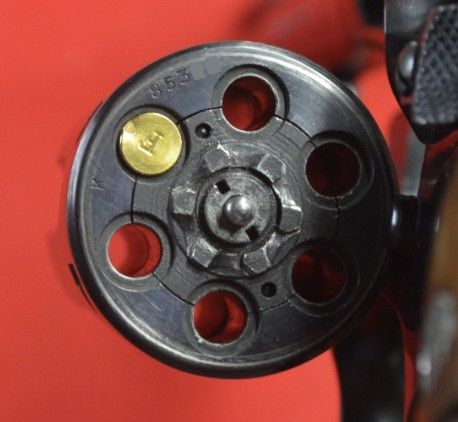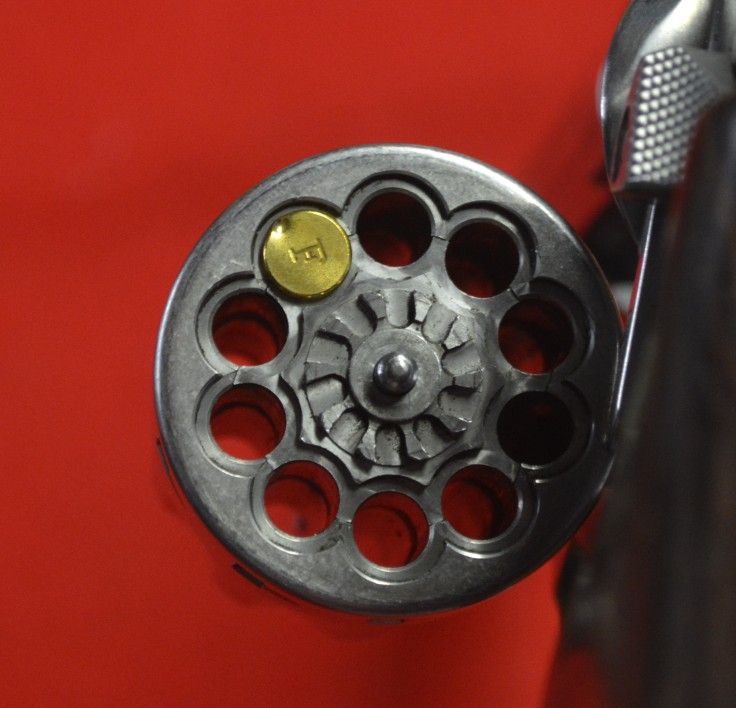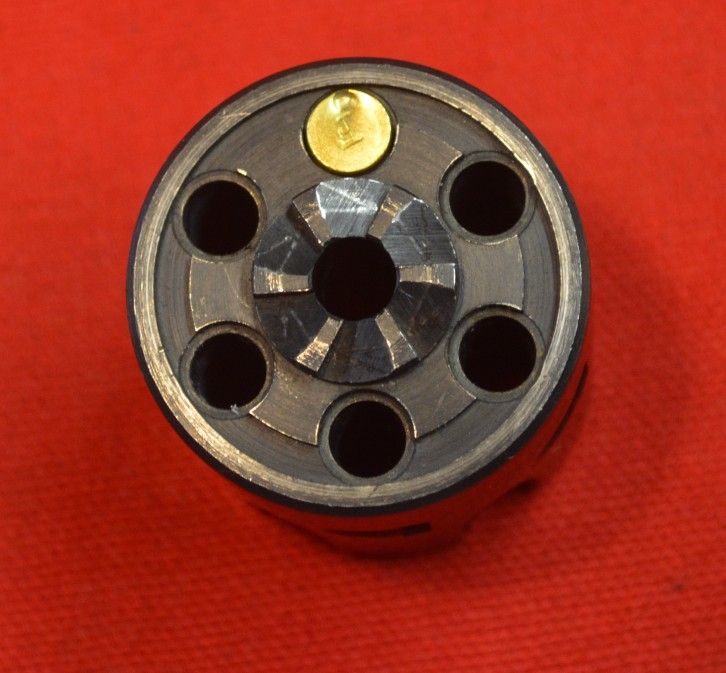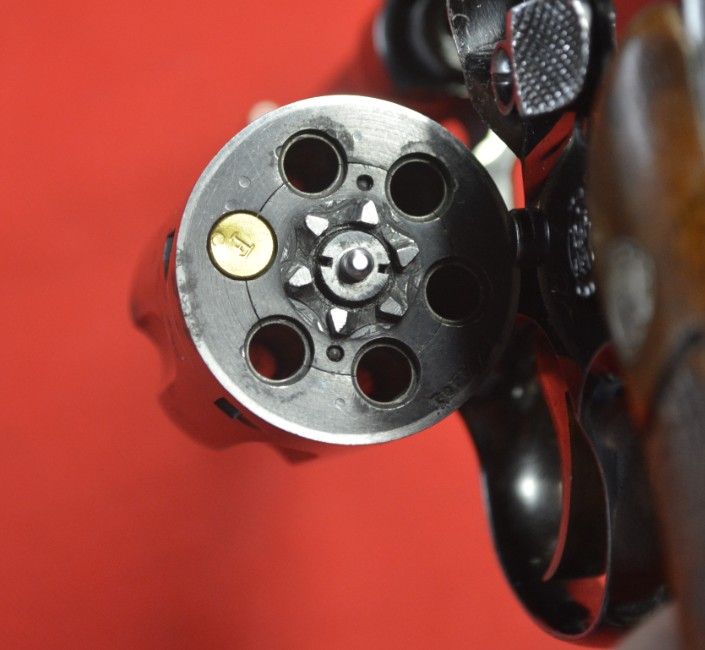bannockburn
Member
- Joined
- Apr 24, 2007
- Messages
- 26,312

That's how they do it.
It
obviously works.
That's how they do it.
It obviously works.
OK.
So the next question is, relating back to how safe it is to dry fire this gun, exactly where on the rim does the firing pin strike the cartridge?
I'm betting that recess is big enough that the firing pin will never actually strike the body of the cylinder, preventing any dimpling or deforming of the cylinder.
In which case, it would probably be OK to dry fire that revolver as long as it was not done to excess.
NEVER DRY FIRE your revolver. If you do this you will ruin your cylinder and the ammunition will not enter the chamber in the correct way.
Ty for the photo. 12 shots too!
It obviously works.
Yeah, S&W says you should never dry fire their revolvers either, but I have determined the recess around the rims is big enough that the firing pin will never strike the cylinder. Lawyers often make them say stuff like that. See the photo I posted elsewhere in this thread.
Do me a favor sometime. Fire a round, then remove the cylinder carefully so the fired case is not disturbed. Then see from the firing pin strike on the spent case where the firing pin actually hits.
I'll bet it does not touch the cylinder.




